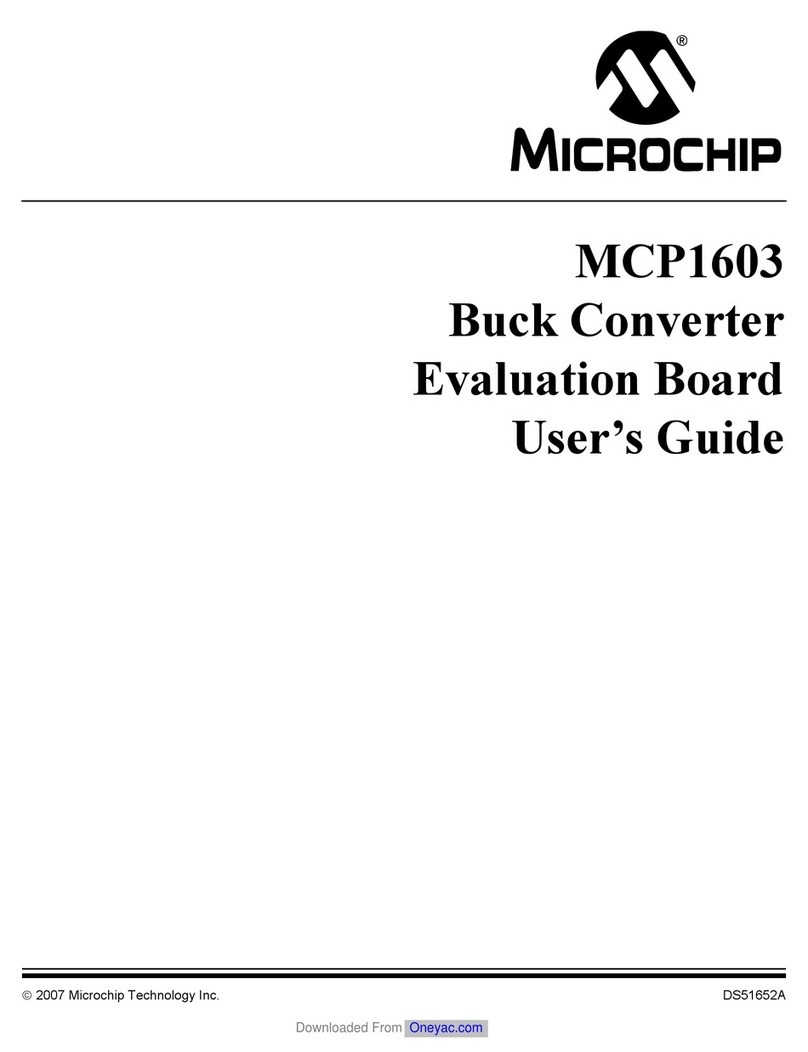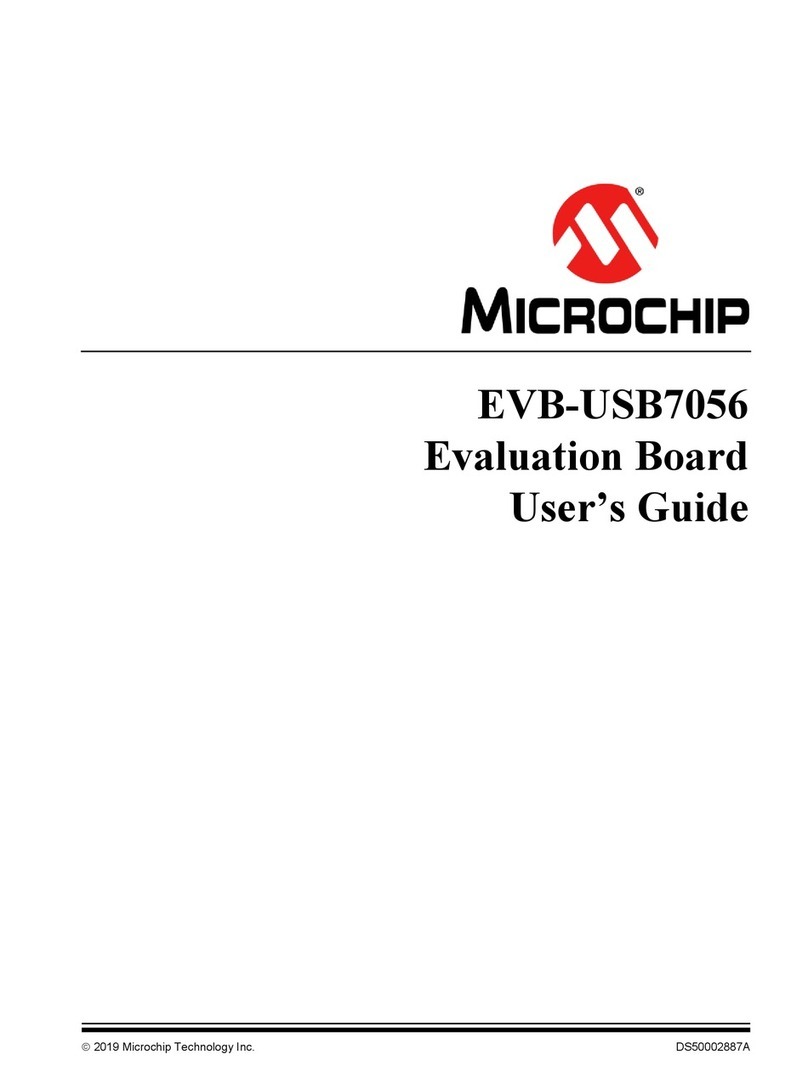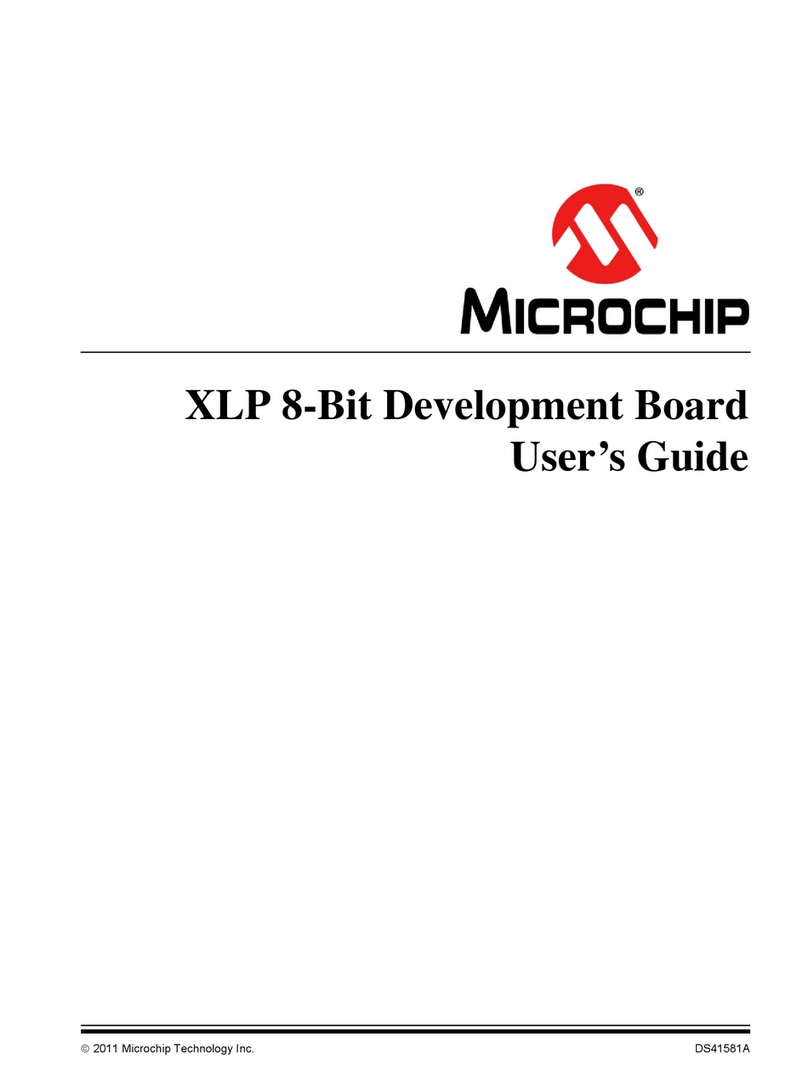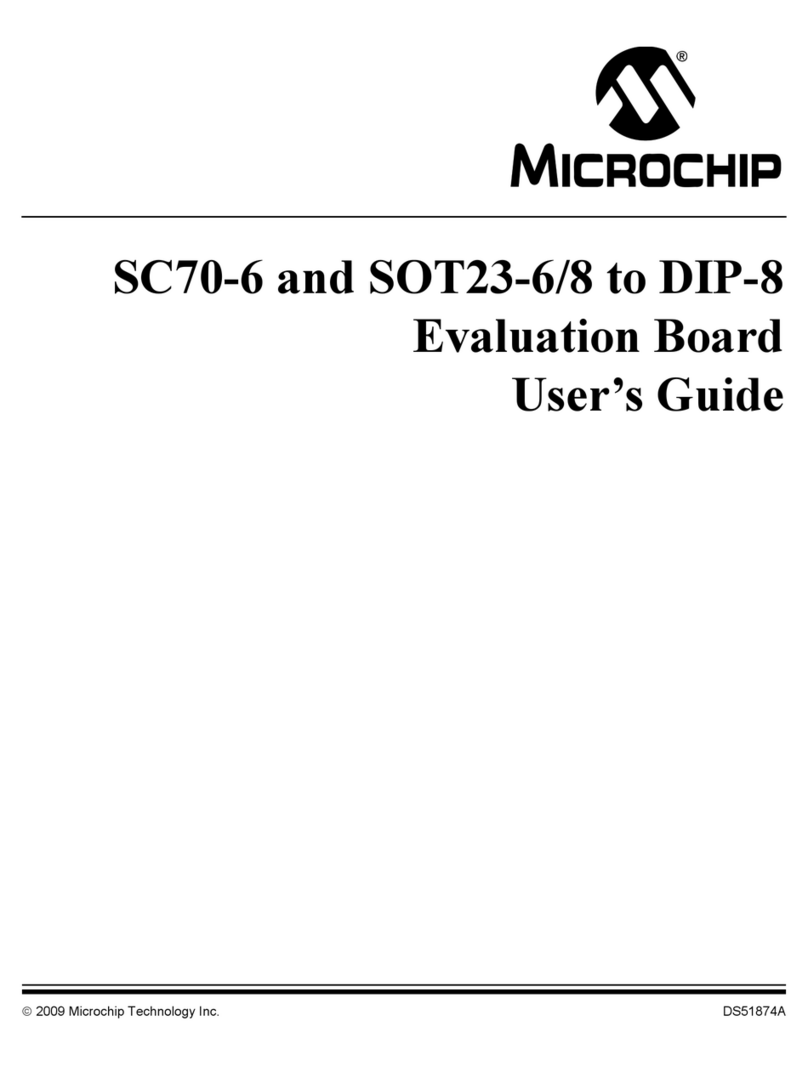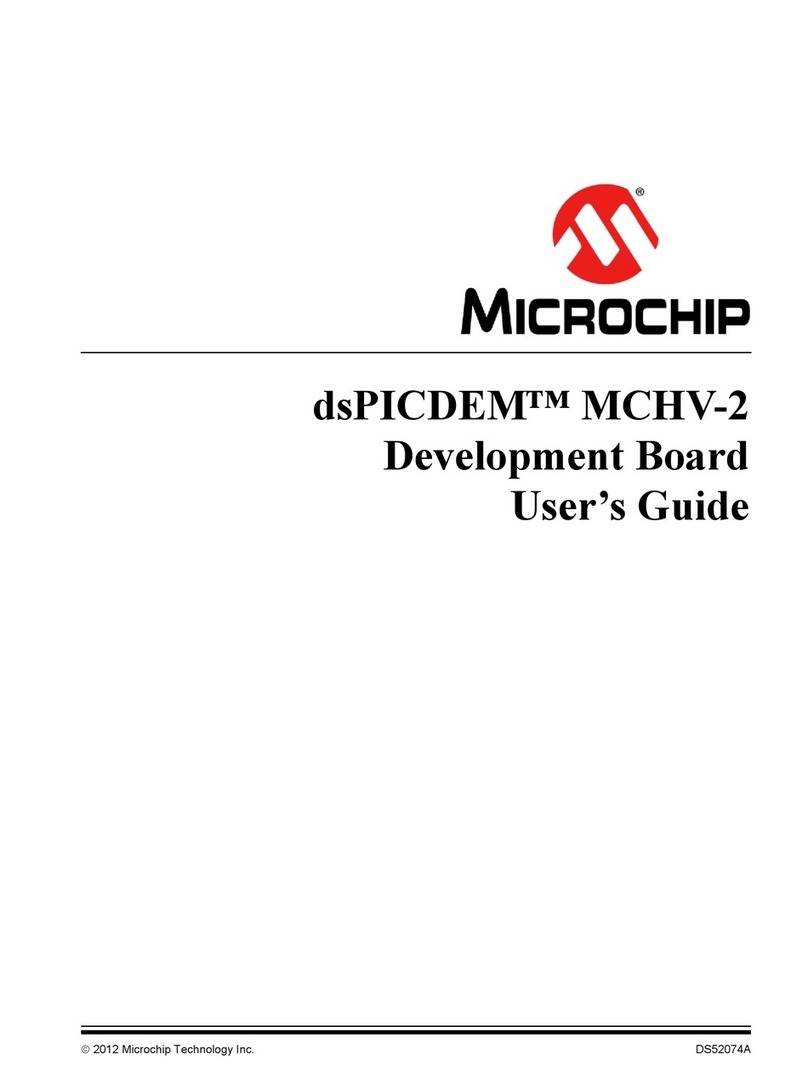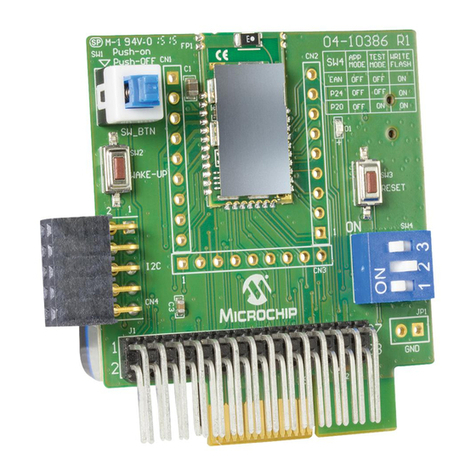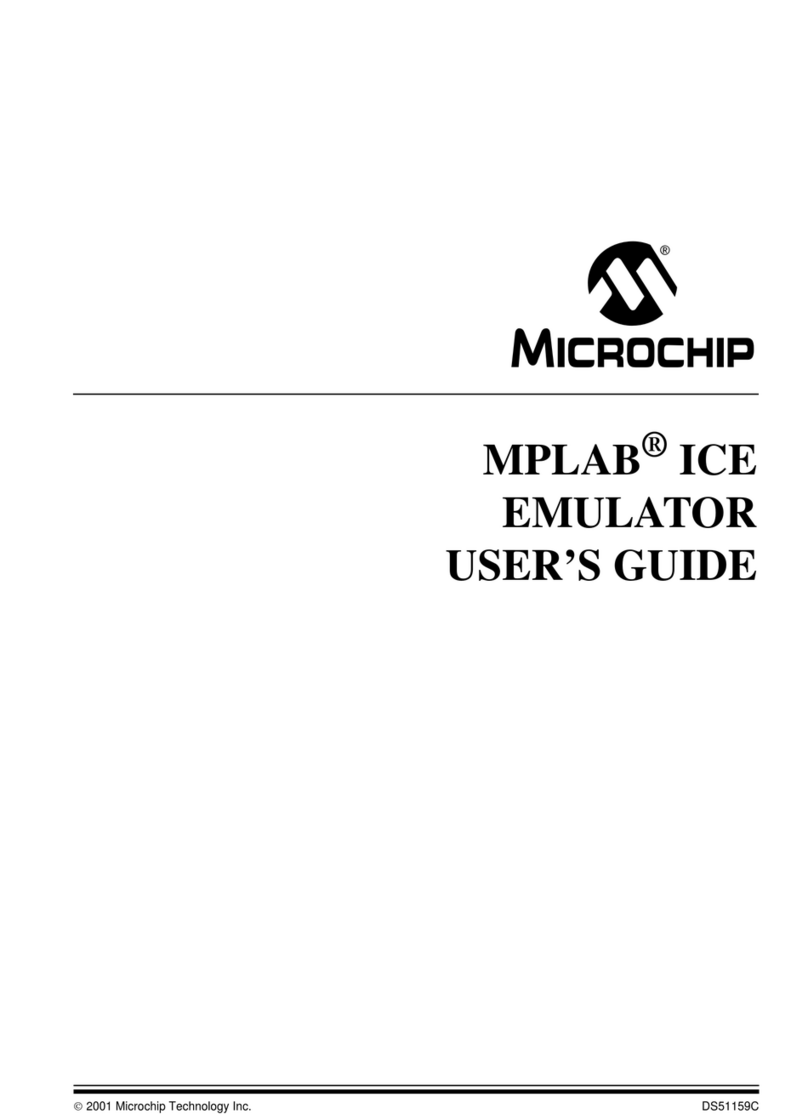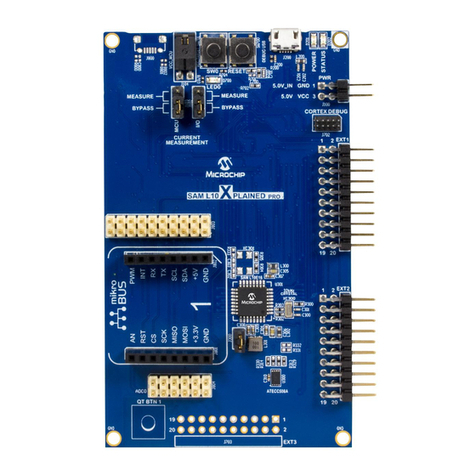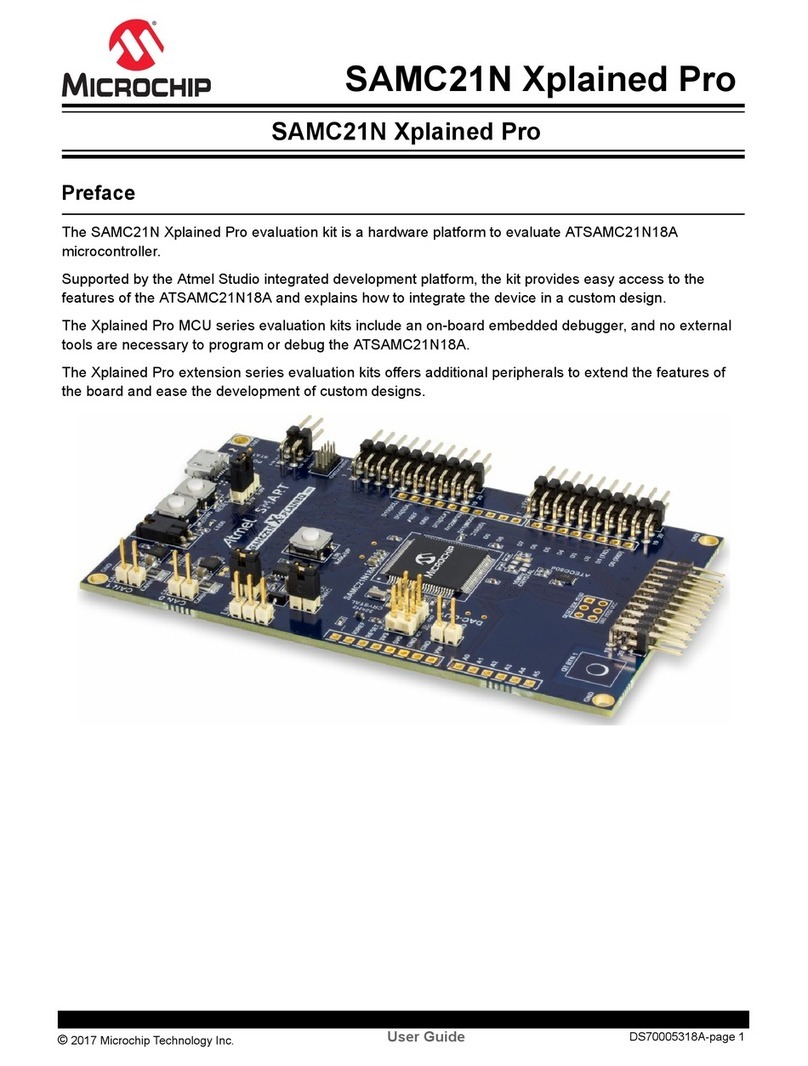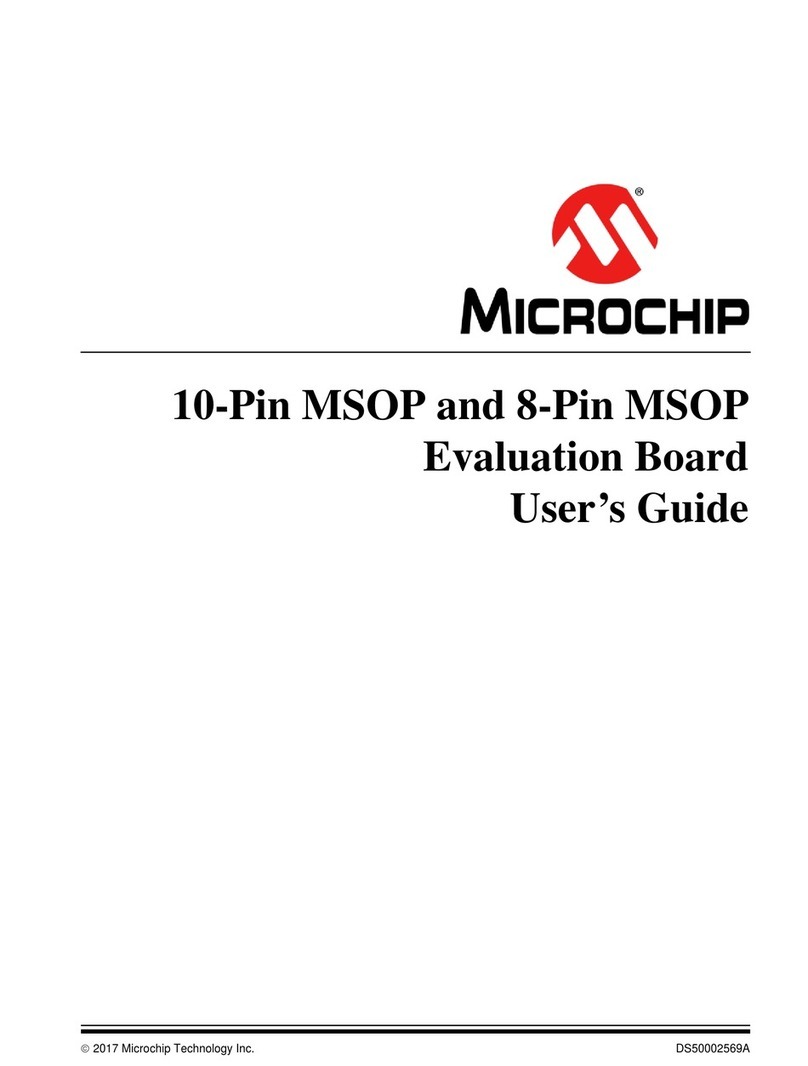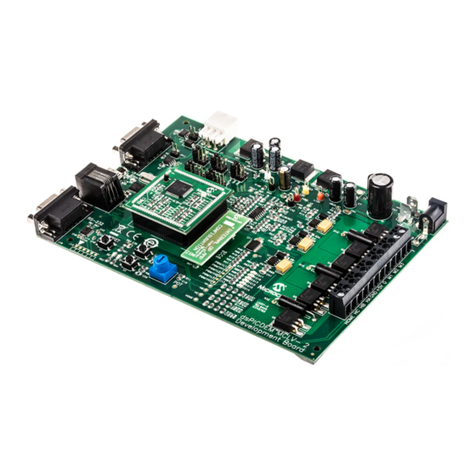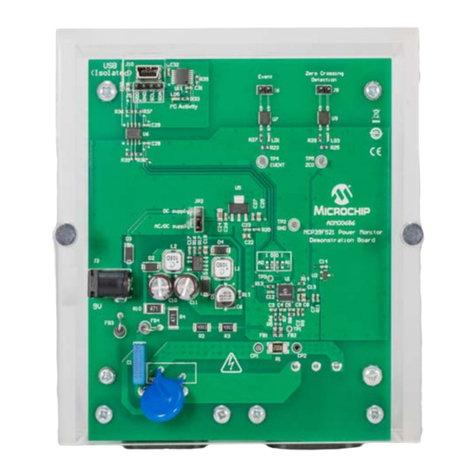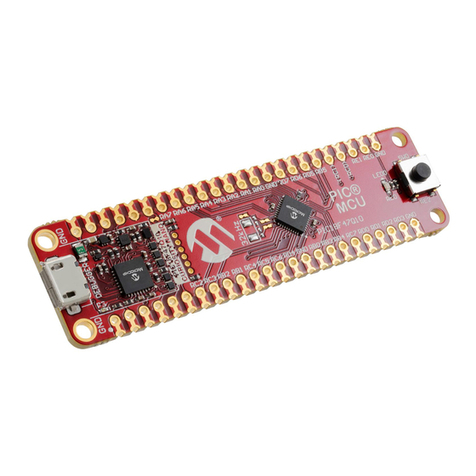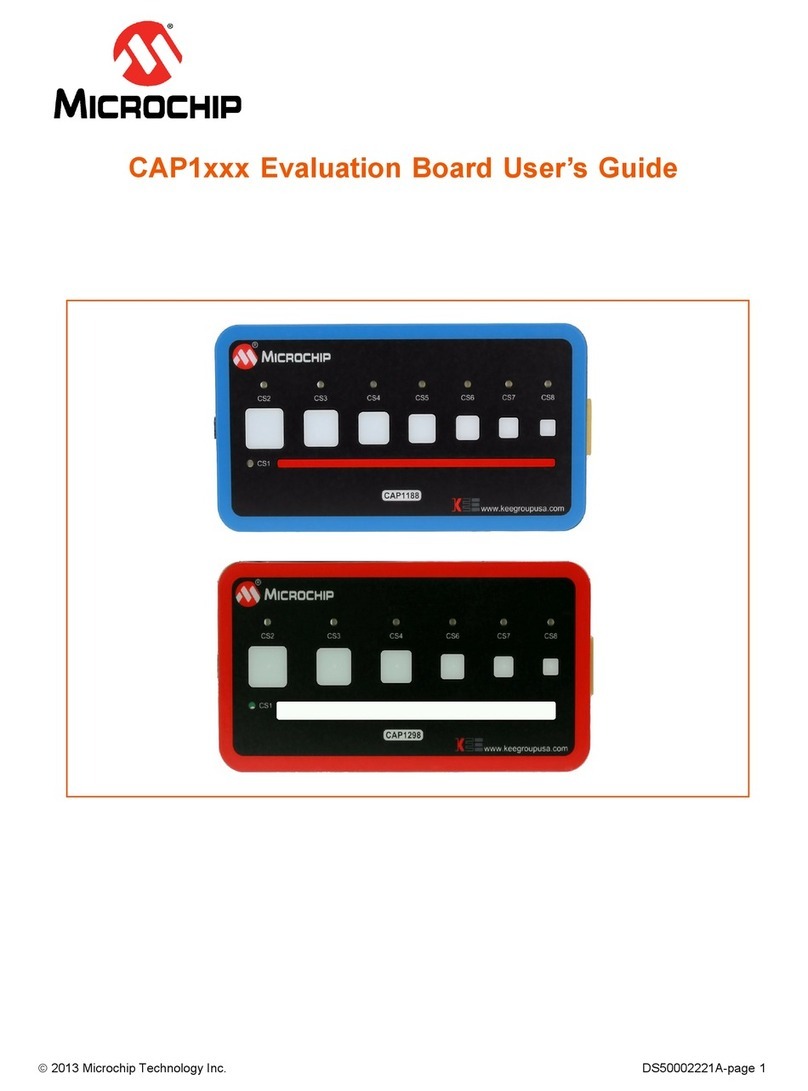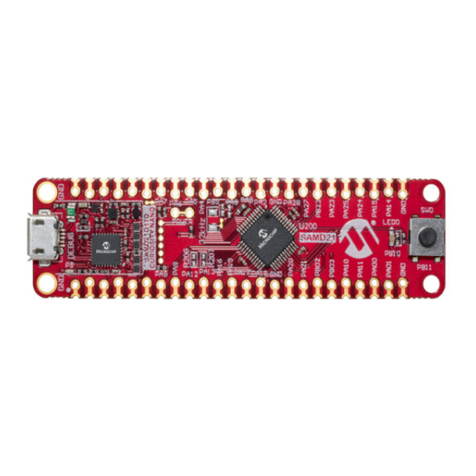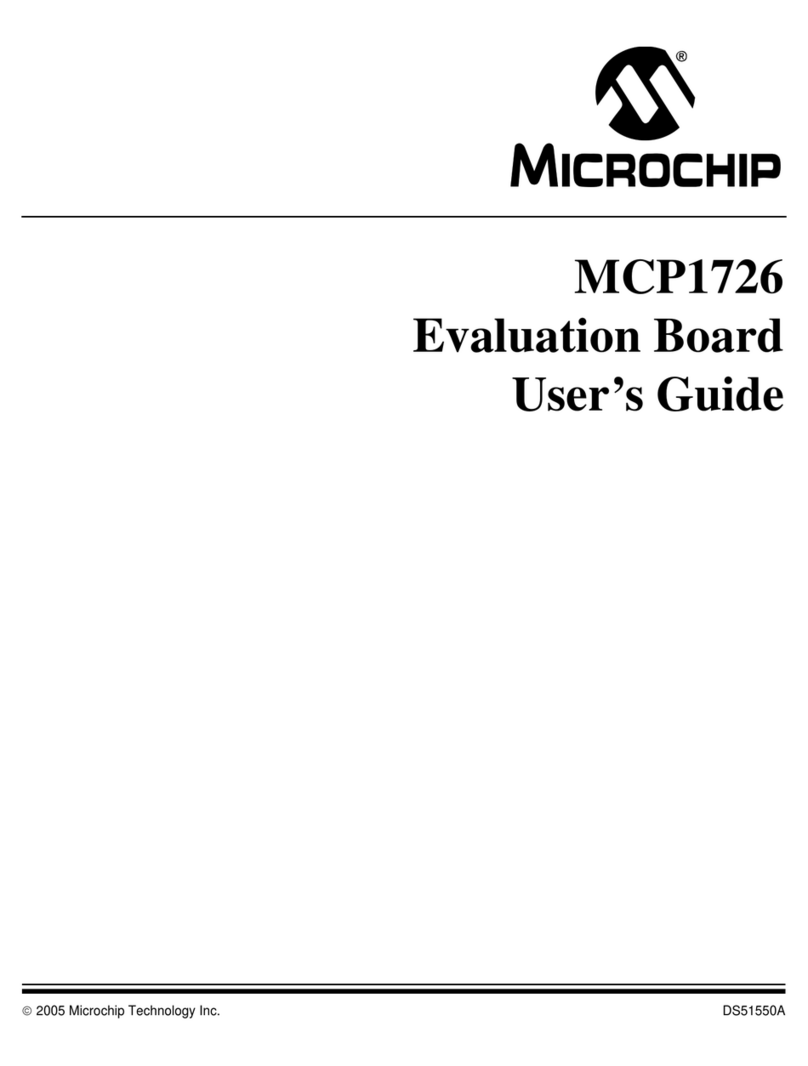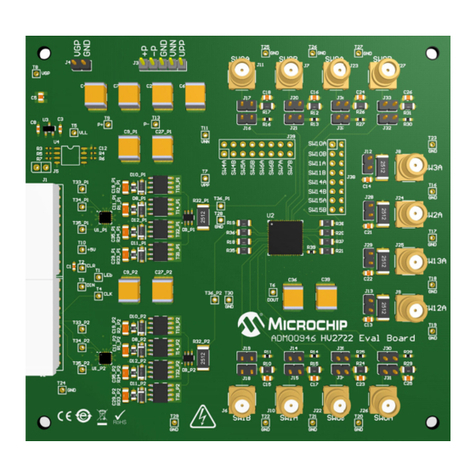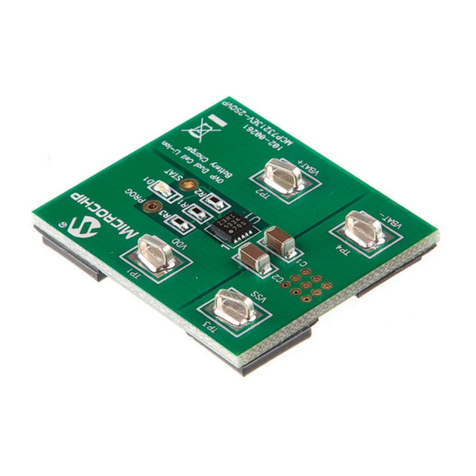
MPLAB®
PM3
ICSP™ Design
Guide
ICSP™
Implementation Considerations
The MPLAB® PM3 Device Programmer allows programming
of
PICmicro®
microcontrollers that are alreadyinstalled in a target board using ICSP (In-Circuit Serial
Programming). However, the application circuit must be designed to allow all the
programming signals to be directly connected to the PICmicro device and must
compensate for the following issues. Figure 1 shows a typical circuit as a starting point
when designing an application circuit for ICSP.
ISOLA
TE MCLRNPP PIN
When the MCLRNPP pin is connected to an RC circuit, theoperation
of
ICSP is affected
by the size
of
the capacitive load. It is recommended that you use a resistor
or
Schottky-
type diodeto isolate the RC circuit from the programmer. Ifthe application circuitcannot
isolate the RC circuit in this way, a series resistor up to 100 Ohm may be used to help
prevent overshoot caused by the application circuit. In addition,
if
an external reset
device is connected to MCLR, it must be isolated from the voltage applied by the
programmerto this pin during programming. Typically, a series resistor between MCLR
and the external reset device
is
used to limit the current to safe levels. See Application
Note AN820 for more details on this topic.
ISOLA
TE PGC/PGD/PGM PINS
Pins RB6/PGC and RB7/PGD must be isolated from the application circuit to prevent
the programming signals from being affected by the application circuitry. This isolation
circuit must account for RB6/PGC and RBS/PGM being inputs on the PICmicro device
and for RB7/PGD being bidirectional (can be driven by both the PICmicro device and
the programmer).
If
the design permits, these pins should NOT be used by the
applications. Consider what type
of
circuitry is connected to RB6/PGC, RB7/PGD and
RBS/PGM and decide on how to isolate these pins. Figure 1 shows typical circuitry. It
does not show any circuitry to isolate RB6/PGC, RB7/PGD and RBS/PGM on the
application circuit as this is application dependent.
Voo
Typical circuits use several hundred microfarads
of
capacitance on
Voo
to help damp
noise and ripple. However, this capacitance requires a fairly strong driver
in
the
programmerto meet the rise rate timings for
Voo
. Ifan application circuit requires more
power than the MPLAB PM3 programmer can supply, the application circuit may need
to power itself. Refer to the MPLAB PM3 on-line help for further details.
Voo-ONLY (NON-HIGH VOLTAGE) PROGRAMMING
When using Voo-only ICSP mode, care must be taken to ensure RBS/PGM does not
float high during power-on. Therefore, it is recommended that RBS/PGM be tied to
system ground through a 1
OK
resistor and that RBS/PGM is not used for the application
circuit.
lsolat10n
ClfCUltry
R
eStstor
or
Sclloltky·type
dlOde
+5
V
10K
• 4700hm·
L
1
µF
•
I
+
5V
'T
ypical
Values
Targel
M1crocontroller
Device
Note
: If
unable
to
isolate
MCLR
on
PCB.
use
senes
resistor
here
to
he!p
pre'.'cr:
cxccssi-.c
ove;shoot.
f:!:l!'!==----
-
Connect
lo
~..._....~---
MP
LAB
'
PM3
.
Note
:
Isolate
programming
signals
f
rom
appllcat1on
circull
To
Application
Ci
rcuit
1csp
·• ·
FIGURE 1: TYPICAL ICSP APPLICATION CIRCUIT
GND
The MPLAB PM3 must be at the same ground potential as the application circuit.
ADDITIONAL SYSTEM CONCERNS
Some Microchip programming specifications require the device to be programmed at
SV
. If an application circuit operates at 3V only, special considerations must be made,
such as totally isolating the PICmicro device during programming.
PROGRAMMING ENVIRONMENT
Physical distance between the programmer and the application circuit affects the load
capacitance on each
of
the programming signals. Therefore, the cable length must be
kept as short as possible and properly terminated and shielded. Otherwise, the
programming signals may be corrupted by ringing or noise.
FINAL NOTE
If
programming problems exist once the application circuit is designed, verify that all
programming signals meet the programming specification rise times and voltage levels.
~
MICROCHIP
©
2004 Microchip Technology Inc
.,
6/04 DS51474A
